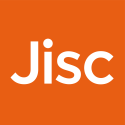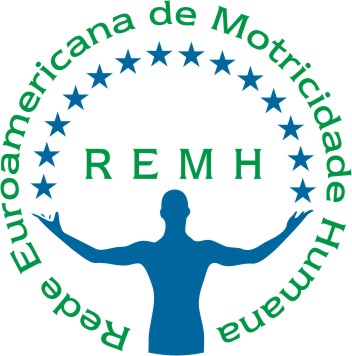Un análisis conductual de los predictores de la adherencia al ejercicio y su impacto económico en el contexto del fitness
Agencias de apoyo
- Portuguese Foundation for Science and Technology, I.P., Grant/Award Number UIDB/04045/2020 (https://doi.org/10.54499/UIDB/04045/2020)
Resumen
Este estudio pretendía examinar la relación entre las percepciones de los clientes sobre los comportamientos de los fisiólogos del ejercicio, los tipos de motivación y su influencia posterior en la adherencia al ejercicio durante un periodo de seis meses. Además, evaluamos el impacto financiero del abandono de los clientes en los ingresos de los gimnasios durante este periodo. Métodos: Una muestra de 1.803 individuos (edades 18-54; M = 26,61, SD = 5,48) inscritos en gimnasios de todo Portugal participaron en este estudio. Resultados: Durante el periodo de seis meses, el 42% de los clientes cancelaron sus abonos, lo que supuso una pérdida de ingresos mensual estimada de 28.659,60 euros al final del sexto mes. Acumulativamente, los gimnasios experimentaron una pérdida total de ingresos de 110.393,27 euros durante el periodo de estudio. Conclusiones: Los hallazgos sugieren que los comportamientos de apoyo a las necesidades por parte de los fisiólogos se asocian positivamente con la motivación autónoma, que a su vez promueve la adherencia al ejercicio a largo plazo. Por el contrario, los comportamientos que frustran las necesidades están relacionados con la motivación controlada, que afecta negativamente al mantenimiento del ejercicio. Estos datos ponen de relieve la importancia de las estrategias de motivación tanto para la retención de clientes como para la sostenibilidad financiera de los gimnasios.
Descargas
-
Resumen471
-
(68-80) A Behavioral Anal...207
Citas
AGAP. (2017). Barómetro do Fitness em Portugal.
AGAP. (2018). Barómetro do Fitness em Portugal.
AGAP. (2019). Barómetro do Fitness em Portugal.
AGAP. (2020). Barómetro do Fitness em Portugal.
AGAP. (2021). Barómetro do fitness em Portugal.
AGAP. (2022). Barómetro do Fitness em Portugal.
AGAP. (2023). Barómetro do Fitness em Portugal.
Barreto, P. de S. (2013). Why are we failing to promote physical activity globally? Bulletin of the World Health Organization, 91(6), 390-390A. https://doi.org/10.2471/BLT.13.120790
Bauman, A., Bull, F., Chey, T., Craig, C. L., Ainsworth, B. E., Sallis, J. F., Bowles, H. R., Hagstromer, M., Sjostrom, M., Pratt, M., & The IPS Group. (2009). The International Prevalence Study on Physical Activity: Results from 20 countries. International Journal of Behavioral Nutrition and Physical Activity, 6(1), 21. https://doi.org/10.1186/1479-5868-6-21
Buckworth, J., Dishman, R. K., O’Connor, P. J., & Tomporowski, P. D. (2013). Exercise psychology, 2nd ed (pp. xv, 527). Human Kinetics. https://doi.org/10.5040/9781492595502
Bull, F. C., Al-Ansari, S. S., Biddle, S., Borodulin, K., Buman, M. P., Cardon, G., Carty, C., Chaput, J.-P., Chastin, S., Chou, R., Dempsey, P. C., DiPietro, L., Ekelund, U., Firth, J., Friedenreich, C. M., Garcia, L., Gichu, M., Jago, R., Katzmarzyk, P. T., … Willumsen, J. F. (2020). World Health Organization 2020 guidelines on physical activity and sedentary behaviour. British Journal of Sports Medicine, 54(24), 1451–1462. https://doi.org/10.1136/bjsports-2020-102955
Cid, L., Monteiro, D., Teixeira, D., Teques, P., Alves, S., Moutão, J., Silva, M., & Palmeira, A. (2018). The Behavioral Regulation in Exercise Questionnaire (BREQ-3) Portuguese-Version: Evidence of Reliability, Validity and Invariance Across Gender. Frontiers in Psychology, 9. https://www.frontiersin.org/articles/10.3389/fpsyg.2018.01940
Eurobarometer. (2004). The citizens of the European Union and Sport. European Commission.
Eurobarometer. (2010). Special Eurobarometer 334—Sport and Physical Activity. European Commission.
Eurobarometer. (2014). Special Eurobarometer 412—Sport and Physical Activity,. European Commission, 1-135.
Eurobarometer. (2018a). Special Eurobarometer 472—Sport and Physical Activity. European Commission, 1-133.
Eurobarometer. (2018b). Special Eurobarometer 575—Sport and Physical Activity. European Commission, 1-95.
Eurobarometer. (2022). Special Eurobarometer 575—Sport and Physical Activity. European Comission.
Gjestvang, C., Abrahamsen, F., Stensrud, T., & Haakstad, L. A. H. (2020). Motives and barriers to initiation and sustained exercise adherence in a fitness club setting—A one-year follow-up study. Scandinavian Journal of Medicine & Science in Sports, 30(9), Article 9. https://doi.org/10.1111/sms.13736
Gomes, A. R., Gonçalves, A. M., Maddux, J. E., & Carneiro, L. (2018). The intention-behaviour gap: An empirical examination of an integrative perspective to explain exercise behaviour. International Journal of Sport and Exercise Psychology, 16(6), 607–621. https://doi.org/10.1080/1612197X.2017.1321030
Guthold, R., Stevens, G. A., Riley, L. M., & Bull, F. C. (2018). Worldwide trends in insufficient physical activity from 2001 to 2016: A pooled analysis of 358 population-based surveys with 1·9 million participants. The Lancet Global Health, 6(10), e1077–e1086. https://doi.org/10.1016/S2214-109X(18)30357-7
Hair, J., Babin, B., Anderson, R., & Black, W. (2019). Multivariate Data Analysis (8th ed). Pearson Educational.
Harriss, D. J., MacSween, A., & Atkinson, G. (2019). Ethical Standards in Sport and Exercise Science Research: 2020 Update. International Journal of Sports Medicine, 40(13), 813–817. https://doi.org/10.1055/a-1015-3123
Hooker, S. A., Ross, K. M., Ranby, K. W., Masters, K. S., Peters, J. C., & Hill, J. O. (2016). Identifying groups at risk for 1-year membership termination from a fitness center at enrollment. Preventive Medicine Reports, 4, 563–568. https://doi.org/10.1016/j.pmedr.2016.10.016
Howard, J. L., Gagné, M., & Bureau, J. S. (2017). Testing a continuum structure of self-determined motivation: A meta-analysis. Psychological Bulletin, 143(12), 1346–1377. https://doi.org/10.1037/bul0000125
IHRSA. (2016). The 2016 IHRSA Global Report: The state of the health club industry.
IHRSA. (2018). The 2018 IHRSA Global Report: The state of the health club industry.
IHRSA. (2020). The 2020 IHRSA Global Report: The state of the health club industry.
MacIntosh, E., & Law, B. (2015). Should I stay or should I go? Exploring the decision to join, maintain, or cancel a fitness membership. Managing Sport and Leisure, 20(3), 191–210. https://doi.org/10.1080/23750472.2015.1025093
Maffetone, P. B., & Laursen, P. B. (2019). Decision-Making in Health and Fitness. Frontiers in Public Health, 7. https://www.frontiersin.org/articles/10.3389/fpubh.2019.00006
Nguyen, H. Q., Ackermann, R. T., Maciejewski, M., Berke, E., Patrick, M., Williams, B., & LoGerfo, J. P. (2008). Managed-Medicare health club benefit and reduced health care costs among older adults. Preventing Chronic Disease, 5(1), A14.
Ntoumanis, N., Ng, J. Y. Y., Prestwich, A., Quested, E., Hancox, J. E., Thøgersen-Ntoumani, C., Deci, E. L., Ryan, R. M., Lonsdale, C., & Williams, G. C. (2021). A meta-analysis of self-determination theory-informed intervention studies in the health domain: Effects on motivation, health behavior, physical, and psychological health. Health Psychology Review, 15(2), 214–244. https://doi.org/10.1080/17437199.2020.1718529
Ntoumanis, N., Thøgersen-Ntoumani, C., Quested, E., & Hancox, J. (2017). The effects of training group exercise class instructors to adopt a motivationally adaptive communication style. Scandinavian Journal of Medicine & Science in Sports, 27(9), Article 9. https://doi.org/10.1111/sms.12713
Rand, M., Goyder, E., Norman, P., & Womack, R. (2020). Why do new members stop attending health and fitness venues? The importance of developing frequent and stable attendance behaviour. Psychology of Sport and Exercise, 51, 101771. https://doi.org/10.1016/j.psychsport.2020.101771
Rodrigues, F., Bento, T., Cid, L., Pereira Neiva, H., Teixeira, D., Moutão, J., Almeida Marinho, D., & Monteiro, D. (2018). Can Interpersonal Behavior Influence the Persistence and Adherence to Physical Exercise Practice in Adults? A Systematic Review. Frontiers in Psychology, 9. https://www.frontiersin.org/articles/10.3389/fpsyg.2018.02141
Rodrigues, F., Pelletier, L., Neiva, H. P., Teixeira, D. S., Cid, L., & Monteiro, D. (2021). Initial validation of the Portuguese version of the Interpersonal Behavior Questionnaire (IBQ & IBQ-Self) in the context of exercise: Measurement invariance and latent mean differences. Current Psychology, 40(8), 4040–4051. https://doi.org/10.1007/s12144-019-00374-y
Rodrigues, F., & Teixeira, D. (2023). Testing Assumptions of the Physical Activity Adoption and Maintenance Model: A Longitudinal Perspective of the Relationships Between Intentions and Habits on Exercise Adherence. Perceptual and Motor Skills, 130(5), 2123–2138. https://doi.org/10.1177/00315125231188240
Rodrigues, F., Teixeira, D., Cerca, L., Bastos, V., & Pereira, H. (2023). History of Fitness in Portugal: A Brief Review of the Influences that Shaped the Current National Panorama: História do Fitness em Portugal. Motricidade, 19(4), Article 4. https://doi.org/10.6063/motricidade.32045
Rodrigues, F., Teixeira, D. S., Neiva, H. P., Cid, L., & Monteiro, D. (2020). The bright and dark sides of motivation as predictors of enjoyment, intention, and exercise persistence. Scandinavian Journal of Medicine & Science in Sports, 30(4), Article 4. https://doi.org/10.1111/sms.13617
Ryan, R. M., & Deci, E. L. (2017). Self-Determination Theory: Basic Psychological Needs in Motivation, Development, and Wellness. Guilford Publications.
Soper, D. (2022). Factorial Calculator [Software] [Computer software].
Sperandei, S., Vieira, M. C., & Reis, A. C. (2016). Adherence to physical activity in an unsupervised setting: Explanatory variables for high attrition rates among fitness center members. Journal of Science and Medicine in Sport, 19(11), 916–920. https://doi.org/10.1016/j.jsams.2015.12.522
Teixeira, D., Monteiro, D., Rodrigues, F., Sousa, A., Chaves, C., & Cid, L. (2020). Ginásios e Health Clubs em Portugal: Estaremos perante uma República das Bananas? Motricidade, 16(1), Article 1. https://doi.org/10.6063/motricidade.19688
Warburton, D. E. R., & Bredin, S. S. D. (2017). Health benefits of physical activity: A systematic review of current systematic reviews. Current Opinion in Cardiology, 32(5), 541–556. https://doi.org/10.1097/HCO.0000000000000437
Williams, J., & MacKinnon, D. P. (2008). Resampling and Distribution of the Product Methods for Testing Indirect Effects in Complex Models. Structural Equation Modeling : A Multidisciplinary Journal, 15(1), Article 1. https://doi.org/10.1080/10705510701758166
Withall, J., Jago, R., & Fox, K. R. (2012). The effect a of community-based social marketing campaign on recruitment and retention of low-income groups into physical activity programmes—A controlled before-and-after study. BMC Public Health, 12(1), 836. https://doi.org/10.1186/1471-2458-12-836
World Medical Association. (2013). World Medical Association. (2013). World Medical Association Declaration of Helsinki ethical principles for medical research involving human subjects. Journal of the American Medical Association, 310(20), 2191–2194. https://doi.org/10.1001/jama.2013.281053. JAMA.
Las obras que se publican en esta revista están sujetas a los siguientes términos:
1. El Servicio de Publicaciones de la Universidad de Murcia (la editorial) conserva los derechos patrimoniales (copyright) de las obras publicadas, y favorece y permite la reutilización de las mismas bajo la licencia de uso indicada en el punto 2.
2. Las obras se publican en la edición electrónica de la revista bajo una licencia Creative Commons Reconocimiento-NoComercial-SinObraDerivada 3.0 España (texto legal). Se pueden copiar, usar, difundir, transmitir y exponer públicamente, siempre que: i) se cite la autoría y la fuente original de su publicación (revista, editorial y URL de la obra); ii) no se usen para fines comerciales; iii) se mencione la existencia y especificaciones de esta licencia de uso.
3. Condiciones de auto-archivo. Se permite y se anima a los autores a difundir electrónicamente las versiones pre-print (versión antes de ser evaluada) y/o post-print (versión evaluada y aceptada para su publicación) de sus obras antes de su publicación, ya que favorece su circulación y difusión más temprana y con ello un posible aumento en su citación y alcance entre la comunidad académica. Color RoMEO: verde.








